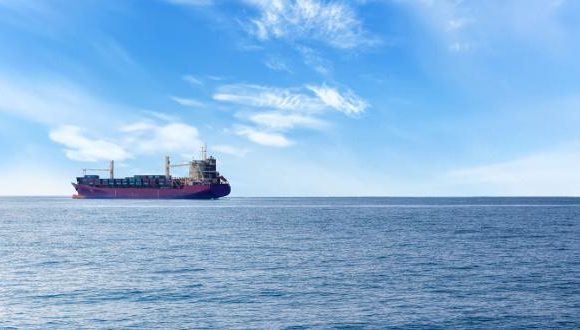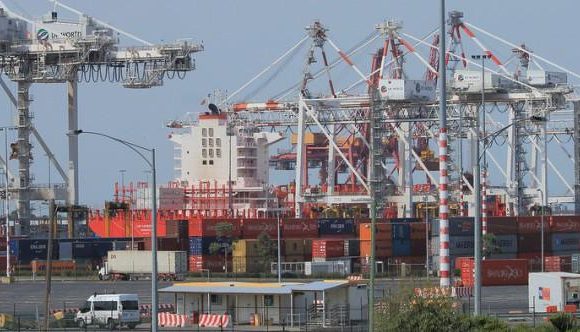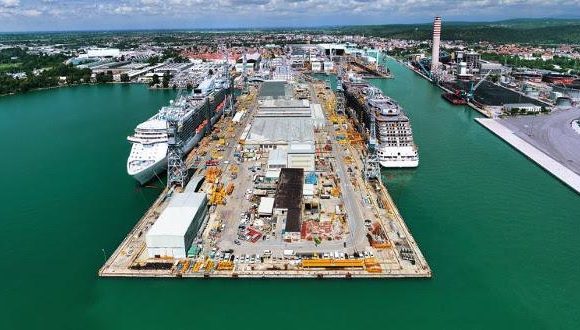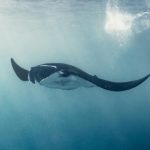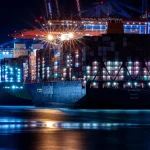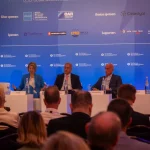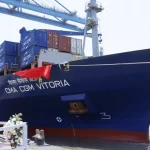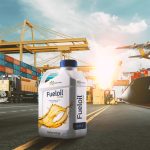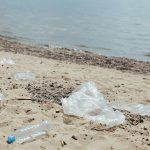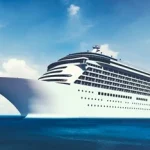The Green Ferry Vision
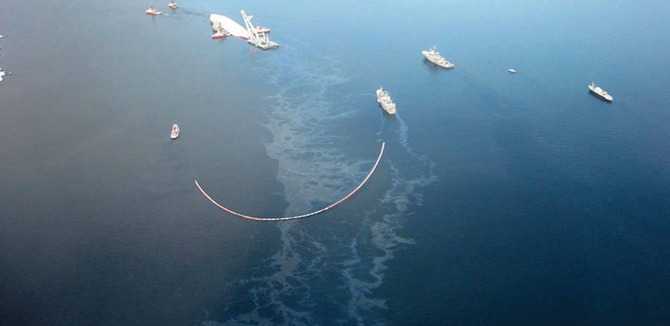
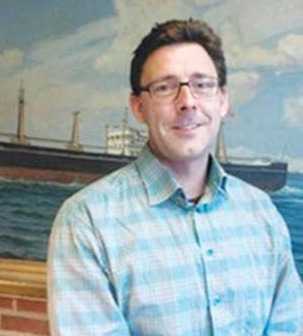 One of the ‘greenest’ islands on the planet, picturesque Aeroe in southern Denmark, is working on plans for a unique type of ferry that could provide environmental inspiration on a global scale. At the heart of the project is a steering group which includes Henrik Hagbarth Mikkelsen, a graduate of the Class of 2005 of the Executive MBA in Shipping and Logistics (the Blue MBA), Copenhagen Business School.
One of the ‘greenest’ islands on the planet, picturesque Aeroe in southern Denmark, is working on plans for a unique type of ferry that could provide environmental inspiration on a global scale. At the heart of the project is a steering group which includes Henrik Hagbarth Mikkelsen, a graduate of the Class of 2005 of the Executive MBA in Shipping and Logistics (the Blue MBA), Copenhagen Business School.
The project involves replacing traditional ferries with vessels powered by stored energy from wind turbine, which would reap big efficiency savings in serving the island, lauded in tourist literature for its “fairy-tale charm.”
Aeroe, which boasts that it is the sunniest island in Denmark, is just 30km by 8km, but it has the world’s largest thermal solar plant for heating and storage, and is an exporter of wind power.
Working on the principle that small is beautiful, Mr Mikkelsen has collaborated with other specialists with solid shipping and technical competencies to draw up a blueprint for substituting the three ferries currently operating, each of which is manned by five people, with four smaller ferries each run by only three crew.
The scheme would have a big impact regionally – the three conventional ferries transport around 600,000 passengers and 170,000 cars to and from the island, located by the Baltic Sea – and be closely watched internationally for its adaptability for crossings in other waters.
The conventional ferries were designed at a time when oil prices were less than a third of what they are now, and their size was guided by parameters of safe manning and economy of scale. According to Mr Mikkelsen and his co-workers, this made the ferries rather large for their task. The island routes take in many areas of shallow water; and service needs to be provided during winter when there is low demand. Logistics combined with pricing has proven an expensive cocktail, forcing fares up and depressing demand further.
Smaller ferries would offer better possibilities of scaling the operation to variations in demand. They would reduce fuel consumption drastically as a new, slimmer design would account much better for water resistance in shallow and narrow channels. Safer ship design and manning practices would allow for a lower crew ratio per passenger.
Chief among the innovations attainable from building on a smaller scale would be ‘greener’ power. There would be no diesel engine on board – and hence zero emissions of carbon dioxide and nitrogen oxide. Batteries and electrical engines would drive a conventional propeller. Battery packs would be charged from just two wind turbines (of 2.3 MW), feasible because of Aeroe’s reserves of wind power.
The group is considering using carbon fibre in the ferry superstructure. Preliminary studies will show if this is viable and can be reconciled with national and European legislation. The hull form is conventional single hull with narrow lines resembling Danish ferries from the 1950s and 1960s. Cost savings have been calculated as stemming from such well known hull designs, but more innovative designs have not yet been ruled out.
The new green ferries would not be high speed models. They would have a service speed of around 13 knots, a little in excess of the existing tonnage, but would not need to reduce speed in sailing channels, allowing them to save 25% of transit time for instance between Marstal and Soeby.
The green ferries would each carry 25 cars compared to between 36 and 40 for each of the existing ferries. Fully deployed, the four new ferries would, however, improve capacity by around 15% because of the shorter transit time. This extra capacity is already needed during peak hours and in the busy summertime when tourists are flocking to the Island.
Preliminary studies show that energy costs could be more than halved by this new model of operation, at the same time eliminating 9m kilos of carbon dioxide a year. The smaller and faster ferries would improve frequency and with 65% more planned departures, running costs would still be down by more than €3m per year (from a total 2012 budget of €11m).
Around half of the cost savings is seen as coming from the lower energy consumption and the other half from lower crewing costs. Cost savings would be equivalent to a 20% fares reduction of €5 per passenger roundtrip and €10 per car ticket, exceeding the price reduction from the public subsidies for the island routes in Denmark.
The preliminary studies further suggest that subsidies to technological development and design could form a substantial 30% to 50% part of funding for newbuildings, based on the experience of similar green projects on Aeroe – some of the people behind the green ferries vision were involved in the island’s solar power project.
The project would be viable without public funding, but annual cost savings would of course be smaller (around half) and the incentive for the public and private partners to get involved weakened. Members of the planning group agree that Aeroe needs a solid and long term sustainable vision for its ferry operation. In a statement, the group said: “We believe that the timing for introducing new and energy efficient tonnage is now,” and called for solutions better adapted to transport demand and the need for viable, green operation.
It says that a paradigm shift is already possible in ferry operation, “a shift away from oil consuming, low-efficient ships and towards electrical vessels powered by modern batteries and charged by power from wind turbines ashore or at sea.”
The green ferry vision would shield the island economy from future rises in the price of oil and from emission taxes. A further advantage is seen as synergy with electrically-driven buses on the small island through sharing charging stations. Taken with existing wind turbines and solar power plants, the scheme would place Aeroe at the forefront of green solutions, said the group.
The group comprises Flemming Boye, associate professor in economy; Roar Falkenberg, chief executive of the local shipyard; Leif Jensen, harbour master; Niels Aage Jensen, master mariner and instructor; Peter Jensen, hotel owner; Jens Kristensen, consultant naval architect; Boye Kroman, shipowner; Henrik Hagbarth Mikkelsen, MBA in Shipping and logistics, Copenhagen Business School; and John Strojek, MBA Copenhagen Business School. Mr Mikkelsen was judged to have written the best Blue MBA integrated strategy project (the thesis that is the culmination of the course) of his year.
By Irene Rosberg, Program Director, The Blue MBA
More details at www.greenferries.dk
Above article was first published in Ship Management International (March April Issue)

